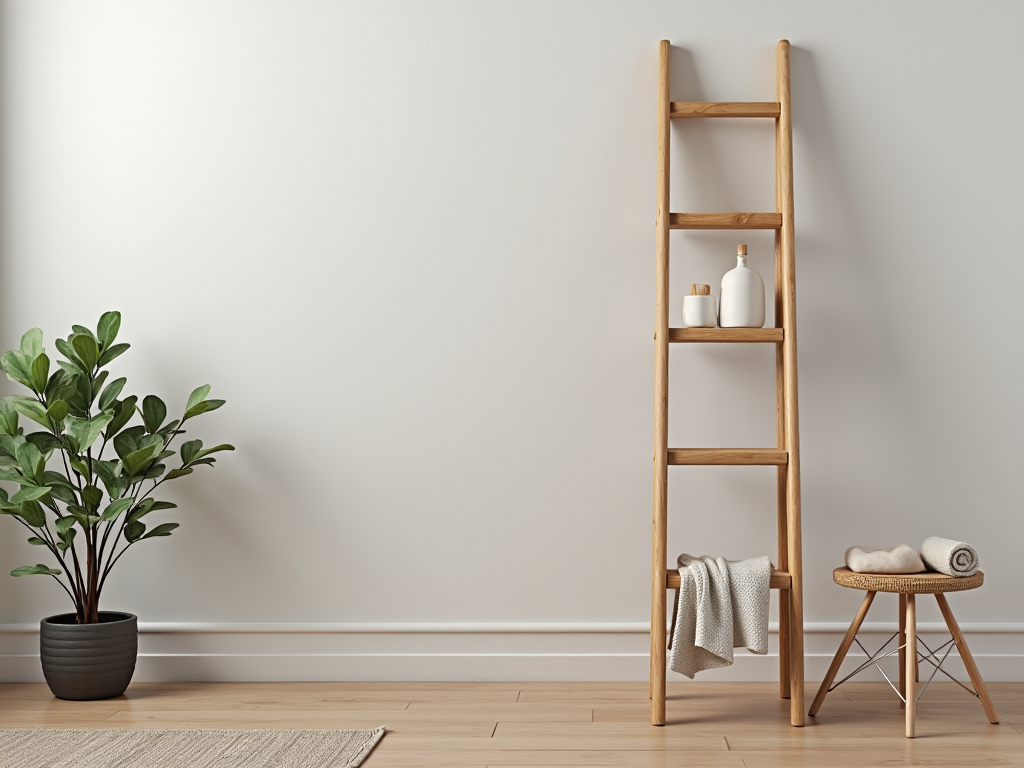Category Overview
Introduction
Ladders serve as essential tools in both residential and commercial settings, offering significant advantages for accessibility and project completion. Whether you're changing a light bulb, reaching high storage, or undertaking DIY projects, ladders enhance your everyday life by providing comfort and utility. Their presence allows you to navigate vertical spaces with ease, ensuring that tasks requiring elevation are handled safely and efficiently.
Functionality
The primary function of ladders is to provide a safe means of ascending and descending heights. They are incredibly versatile, finding applications in various spaces like kitchens for accessing cabinets, living rooms for decorating high areas, or even outdoors for maintenance tasks. Features such as collapsibility and adjustable heights make many models ideal for tight spaces or varying needs. For example, a folding ladder can be easily stored in a closet when not in use, maximizing utility without sacrificing space.
Design & Style
Ladders come in a variety of materials including wood, metal, and fiberglass. Common styles range from traditional wooden step ladders to sleek aluminum designs that resonate with modern aesthetics. You might find rustic options that fit into farmhouse decor or minimalist styles perfect for contemporary settings. Personalization is easy; you can paint wooden ladders to match your color scheme or choose sleek metal options that suit your design vision seamlessly. This adaptability makes it possible to find the right ladder that complements your home’s overall style while serving as a practical tool.
Practical Considerations
When selecting the right ladder, consider factors such as room size, material durability (e.g., metal vs. wood), and intended usage—whether it’s for heavy-duty work or simple household tasks. A common mistake is underestimating height requirements; make sure your ladder reaches the necessary height comfortably without stretching too far. Look for features like non-slip feet and sturdy construction to maximize safety and functionality in everyday use.
Comparison and Alternatives
Choosing between different materials can significantly impact utility; wooden ladders offer sturdiness but may be heavier than their aluminum counterparts which are lightweight yet robust. Additionally, think about shape—round bases often provide better stability on uneven ground compared to rectangular ones which can fit into tighter spots more easily. Your choices should align with the room's size—opt for more compact designs in small spaces versus larger models if you have ample room.
Trends and Popular Items
Current trends showcase an increasing popularity of multifunctional ladders—those designed not only for climbing but also as decorative elements within the home (for example, leaning ladders used as book shelves). Mid-century modern styles are making waves alongside rustic finishes that add charm to any setting. As customers increasingly seek out functional decor pieces, the rise of stylish yet practical ladders continues to capture interest in today’s market. In conclusion, incorporating a well-chosen ladder into your home not only improves functionality but also enhances aesthetic appeal across various rooms while catering to your personal style preferences.
Ladders Collections
- Target Ladders
- Walmart Ladders
- Wayfair Ladders
- Walmart Ladders under $50
- Wayfair Ladders under $50
- Target Ladders under $100
- Walmart Ladders under $100
- Wayfair Ladders under $100
- Target Ladders under $500
- Walmart Ladders under $500
- Wayfair Ladders under $500
- Target Ladders under $1000
- Walmart Ladders under $1000
- Wayfair Ladders under $1000


